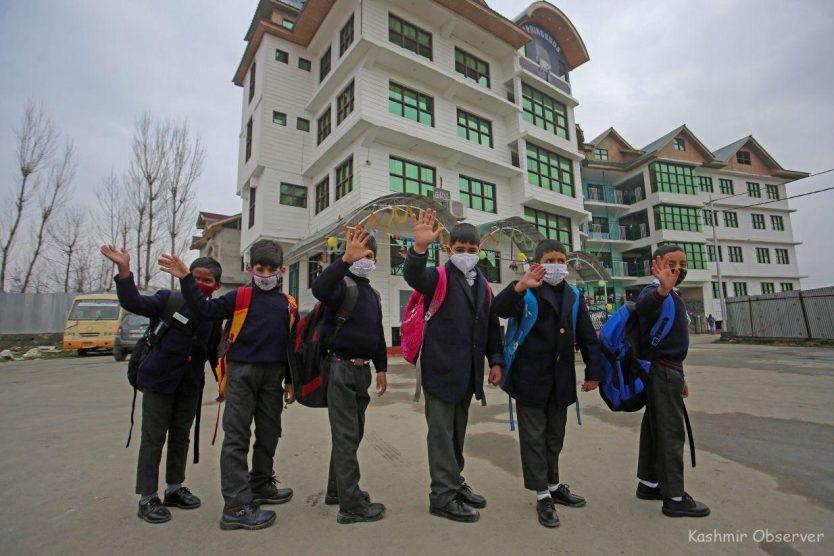
Majority Of Kashmiri Children Growing Up Without Mother Tongue
School children waving for a snap. KO Photo by Abid Bhat
By Dr. Rashid Manzoor Bhat
Fewer than 25 percent of schoolchildren in Srinagar speak Kashmiri fluently at home. Among Kashmiri families living abroad in Jizan, Saudi Arabia, 69.8 percent of children speak Urdu with their parents, 26.4 percent speak Kashmiri, and 3.8 percent use English.
These numbers, from studies by the University of Kashmir and researchers A. Ganai and I. Naikoo, reveal a pattern: the mother tongue is retreating from domestic life, replaced by Urdu and English even where Kashmiri is the native language.
Parents often explain the shift pragmatically.
English signals academic success and future career opportunities. Urdu connects children to religious instruction and formal correspondence. Kashmiri is seen as informal, even rural.
In many urban households, children understand only basic Kashmiri, responding instead in Urdu or English when grandparents speak to them.
Oral traditions, like folk tales, lullabies, proverbs and seasonal songs fade as fewer children grasp the language. The cultural bond that once flowed through storytelling is shrinking.
Urban schools accelerate the decline. Private institutions discourage native-language use, framing Kashmiri as unrefined.
The language is seldom taught beyond primary grades. Reading and writing skills remain minimal, while Urdu and English proficiency strengthens.
Surveys indicate that more than 77 percent of sibling interactions in cities occur in Urdu, with English gradually creeping in. Kashmiri survives mainly in token exchanges with extended family. Even ancestral towns see it reduced to festive phrases or greetings.
The consequences reach beyond vocabulary. Language carries worldview, local knowledge, humour, and ritual. Children who cannot speak Kashmiri lose access to cultural references, historical idioms, and moral lessons encoded in stories.
Heemal and Nagrai, folktales once told rhythmically to teach values and cosmology, are rarely narrated today. Festivals, marriage songs (wanwun), seasonal chants, and mourning verses often go misunderstood, leaving ceremonies hollow.
The family unit, ideally a site of intergenerational continuity, becomes fragmented along language lines.
Social aspiration reinforces this pattern. English, in particular, has become a symbol of sophistication and upward mobility. Children speaking Kashmiri, especially with rural accents, may face subtle ridicule in public or in schools.
Parents internalize these norms, prioritizing Urdu and English to secure better academic placement, social recognition, and professional opportunities.
Social media mirrors this hierarchy: content in English gains traction, Kashmiri remains niche.
The classroom, too, diminishes Kashmiri's role. English-medium schools explicitly prohibit native-language use. Optional Kashmiri subjects exist but lack weight in examinations or competitive environments. Children who spoke Kashmiri at home often stop using it after entering school, shrinking their expressive range.
Oral traditions, like chakri, roaf, leela, fade because they are no longer reinforced in daily life. Literature by Mahjoor, Rasul Mir, or Habba Khatoon is often read in translation, missing idiomatic nuance and emotional depth.
Efforts by institutions such as the Jammu & Kashmir Academy of Art, Culture, and Languages and Adbi Markaz Kamraz aim to preserve Kashmiri through festivals, publications, and courses. But these initiatives cannot replace home use.

Legal Disclaimer:
MENAFN provides the
information “as is” without warranty of any kind. We do not accept
any responsibility or liability for the accuracy, content, images,
videos, licenses, completeness, legality, or reliability of the information
contained in this article. If you have any complaints or copyright
issues related to this article, kindly contact the provider above.


















Comments
No comment